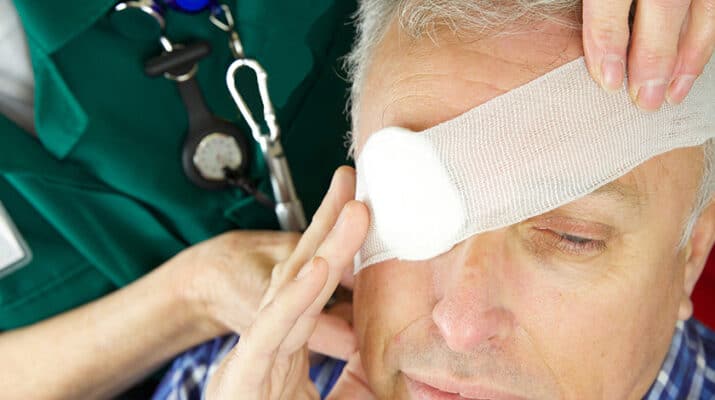By Deborah Jeanne Sergeant
Do you know what to do if a splinter flies into your eye? Or what about a splash of cleaning chemicals? What you do between the acute eye injury and when an emergency medical care provider sees you can affect how well your eye recovers.
According to Prevent Blindness (www.preventblindness.org), 125,000 Americans are injured annually by common household products and up to 20% of those injuries cause temporary or permanent vision loss.
“Don’t try to remove anything from your eye,” said physician Sandra Sieminski, director of glaucoma services at UBMD Ophthalmology at the Ross Eye Institute. “With something high velocity, there’s a higher risk for that projectile having enough speed to rupture the eye. In which case, the eye should be covered with some type of bandage while waiting medical care and the lid should be closed.”
Eye injuries should be taken seriously and not treated with home remedies. Doing that may result in lost vision. The best chance a patient has in recovering well is with prompt emergency medical attention.
The bandage shield can help prevent the object from moving and help minimize further pain and damage. Taping a plastic cup over the eye can serve as a cover. Do not rinse the eye but seek professional medical care.
The way a foreign object enters the eye makes a difference. A projectile hitting the eye hard and embedding will likely cause more damage than an object incidentally falling into an eye. In either case, avoid rubbing the eye or pressing on it. If the object is as small as a particle of sand, blinking and flushing the eye copiously with potable water or sterile saline solution for 10 to 15 minutes may help flush it out.
“Something like a piece of rust should be removed by a professional,” Sieminski said. “Things that cause irritants can hide under the eyelids.”
Contact lens wearers should remove the lens and rinse it before placing it back in the eye.
A larger object will require medical attention.

Chemical injuries such as using ear drops instead of eye drops or getting hit with a chemical solution requires flushing with water, eye drops or saline solution meant for contact lens storage. Use the same flushing procedure as with a small irritant. Contact lens wearers should remove the lens before beginning rinsing, if they can do so quickly.
The lens should not be worn again.
While rinsing, “get someone to get an eyecare provider on the phone,” said physician Laura Puccia with Ocusight’s location in Webster. “You can get a provider to check the pH of the eye. If you can, bring the container of the chemical that was in the eye so we can see which chemical we’re dealing with.”
For additional comfort, wearing sunglasses on the drive to the care provider can help lessen pain. Avoid taking pain medication until seen by a provider as these can thin the
blood and increase bleeding.

